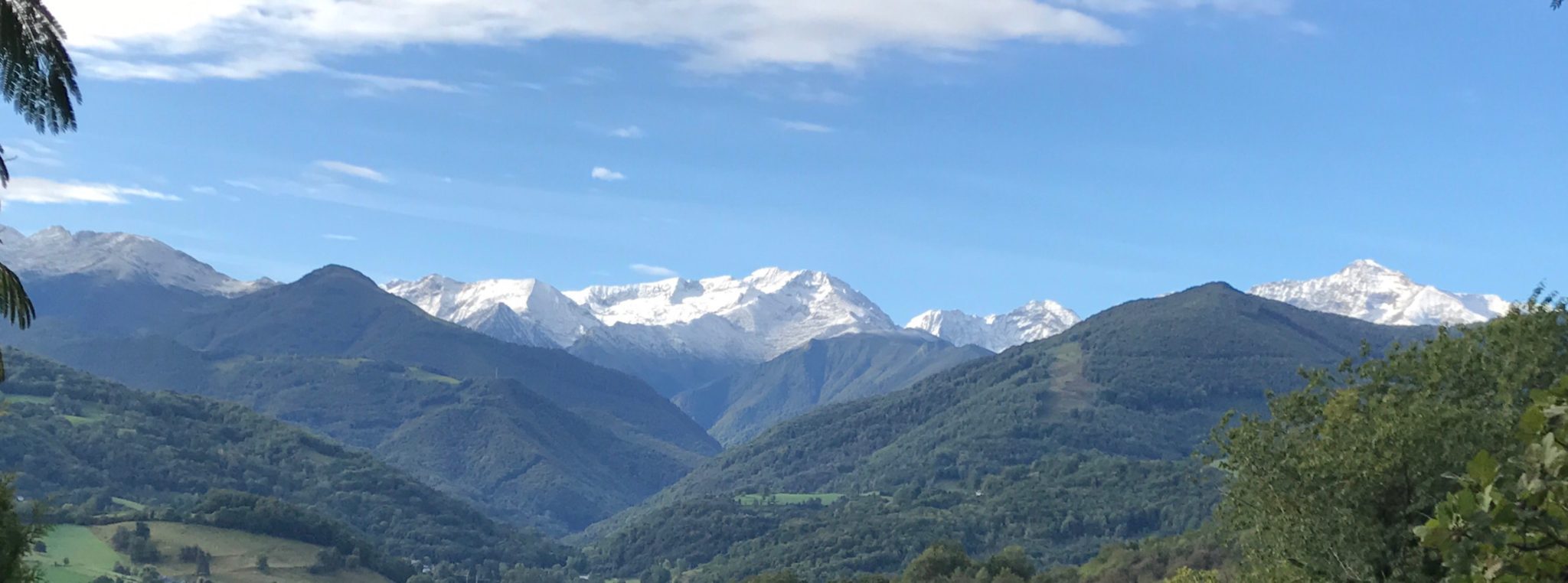
I had no sooner posted last week’s piece about David and Elizabeth Lack in the Pyrenees when there were barn swallows everywhere in the Biros Valley. Until then I had seen no sign of the sort of visible migrations described by the Lacks, possibly because mid-September is a bit too early for that. For the Lacks, there really never was any question about swallows crossing the high mountains: “When we went to the Pyrenees we supposed that it was quite unsettled whether small passerine birds other than hirundines migrate through high mountains.”
I am still in the Pyrenees as I write this on 21 September so I thought it might be worth telling a little more about the Lacks’ explorations and observations.
The Lacks finished their 1950 visit to the Pyrenees with 12 days (15~26 Oct) on the Atlantic coast near St Jean de Luz. On 22-23 October they witnessed two reverse migrations of Skylarks, albeit at a small scale, with a total of 41 and 14 birds on those two days, respectively, heading northeast across the Bay of Biscay. On both days they saw flocks of Skylarks heading in the normal direction for fall migration—southwest—so this reverse migration was both distinctive and puzzling. On one occasion: “a party of Skylarks crossing the bay N.E. on a reversed migration met Chaffinches travelling S.W. by W. and turned round and went with them for a few seconds before continuing N.E.” , suggesting that some species were going the right way at the time.
On their 1949 trip they had seen a massive reverse migration of swallows, possibly triggered by a change in the weather: “The rapidly descending birds looked like a black snowstorm. This reversed movement was presumably due to the birds meeting cloud or a strong headwind. After 16.30 the southward movement greatly slackened, and it ceased about 17.00, when the wind changed to the north and mild warm air blew up the valley…It may be suggested that the above movement started in good weather on a broad front over the high ridges, and that sudden rain brought the birds down and concentrated them in the valley”. The causes of other reverse migrations that they saw were not so obvious, as in the previous example of Skylarks.
The Lacks also recorded some interesting instances of what they called ‘social behaviour’, where individuals waited to join flocks of their own or other species before crossing water. “If, however, a Blue Tit was travelling singly it did not cross [the bay at St Jean de Luz], but dropped down to the tamarisks by the shore and waited for the next migrating party, when it rose up steeply to join them and crossed with them.”
Throughout their publications about the 1945-1950 field work they took pains to point out that their observations and conclusions were preliminary. Were they just being cautious, or was this an early example of realizing the need for what we now call ‘replicability’? I wonder if they were worried that the migrations they had seen in the mountain passes were abnormal events?

The Lacks could not return to the Pyrenees in 1951, so David asked David Snow [1]—a DPhil (= PhD) student at Oxford’s Edward Grey Institute—to return to the Pyrenees in the fall of 1951 to make some further observations at specific sites. Thus, Snow visited Gavarnie in the High Pyrenees from 18-25 September and Col de Puymoren in the eastern Pyrenees near Andorra from 29 Sept-4 Oct 1951. Like the Lacks, he saw thousands of songbirds and swallows flying south close to the ground through the montane passes. But he also saw lots of migrants high above the mountains: “On 4 October 1951, with a N.E. wind, D. W. Snow saw a big broad-front movement high over the Puymorens area…Many of the birds were so high that they could not be seen with the naked eye. Their direction of travel was uninfluenced by the contours.”
Neither the Lacks nor David Snow mentioned there being snow in the high mountains on any of their visits in the autumns of 1949-51. In 2017, however, lots of snow fell during the week of 17 September (see photo at top). Does such early snow hinder migration through the passes? Does it make songbirds more visible to predators? I suspect that the migrations through the mountains are so traditional (i.e. instinctive) that nothing stops the birds even in there face of increased mortality when the ground is covered with snow.
Sources
All quotations are from Lack D, Lack E (1953) Visible migration through the Pyrenees: an autumn reconnaissance. Ibis 95:271-309.
Footnotes
IMAGES: photo of Pyrenees by Bob Montgomerie; photo of David Snow from an obituary in The Guardian 18 March 2009, photo source unknown.